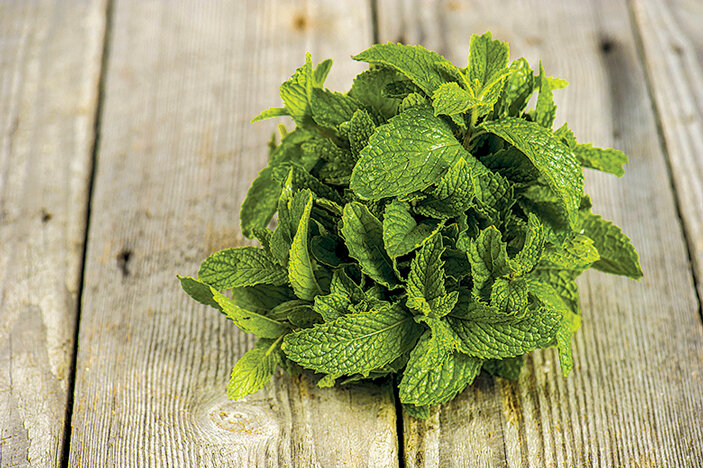The Cascades truly blossom into their namesake in summer, as water rushes from glaciated peaks to feed the land and wild plants. For foragers and herbalists, summer in the Northwest is not simply abundant – it is totally epic. Sixteen-hour days hyper power a flurry of plant activity. Plant nerds stuff their noses into foliage with the same tenacity and elation as the mountaineers scrambling up nearby peaks.
Summer, despite (and thanks to) its glories, can burn people out. Between projects, festivals, outdoor adventures and heat, it is all too easy to find oneself in an overstimulated or depleted state. To counter this, try foods and herbs that are cooling, calming to the central nervous system, and stimulating to vital energy.
Fresh foliage, such as berries and greens, is a start. If all else fails, follow taste: seek out moist, cooling, astringent and salty foods including cucumber, melon, leafy greens, tomatoes and yogurt. Likewise, begin to phase out warming foods and drinks with cooling alternatives to balance out the body’s system. This could mean drinking green tea instead of coffee and eating fish rather than beef.
Eating seasonally and locally will likely set you up for success, since the foods available naturally in the summer tend to be cooling and stimulating. Here are some plants to forage that nourish the body and balance out the heat of summer.

Several varieties of wild rose grow in the Pacific Northwest. Wood rose is most common, but all local varieties are edible and medicinal. They bloom throughout summer and grow in moist clearings, along beaches and streams and at forest edges. These shrubby plants bear thorns and smaller flowers than their domesticated counterparts.
The primary medicinal property of rose is its cooling effect on the body. When feeling aggravated, hot or upset, rose can provide immediate relief. Rose is deeply calming and particularly useful for anxiety, anger and frustration. Physically, it is anti-inflammatory, helping internally with gut inflammation and externally on bites, burns, rashes and skin irritation.
Rose petals and leaves can be gathered and used fresh or dried for teas. Make a cold infusion by filling a jar with cold water and a handful of rose petals, leaving it for 4-6 hours. The cold infusion draws out the pleasant floral sweetness of the petals, while a hot infusion tends to draw out more of the astringency of the plant. Fresh rose petals also make an excellent addition to summer salads, adding zest and color.

Like rose, several varieties of mint grow in the Pacific Northwest, with field mint being most abundant. Though mints vary in taste and intensity, the primary medicinal properties and flavor profiles are all similar. The active compound is menthol, which gives mint that deliciously cooling flavor and scent. Wild varieties look and smell like cultivated varieties, with serrated, elliptical leaves on plants from 10 to 20 inches high. Mint can overtake a garden and spread, and feral plants can be found in neighborhoods and gardens. Wild varieties typically grow in damp fields, wet meadows and stream banks.
Mint makes a refreshing addition to teas, salads and cocktails. Medicinally, its primary use is to treat upset stomachs. Mint is also rich in minerals and has a stimulating effect. It’s used to awaken and sharpen the mind, increase vitality, and nourish the body.
When combined, rose and mint make a tasty duo in salads and drinks, and their medicinal properties blend together nicely as a formula that balances the calming effect of rose with the invigorating qualities of mint.

Wild raspberry is one of many berries that decorate the Pacific Northwest landscape. Though raspberry’s close relatives – blackberries, thimble berries and salmon berries – all make amazing pies, wild raspberry stands out not only for its irresistible tiny red berries, but also for its highly medicinal leaves. Not to mention that wild raspberries are the best trail snacks known to mankind.
Blackcap raspberries and red raspberries both grow in Washington. While blackcaps grow best in the conifer forests west of the Cascades, red raspberries prefer riparian areas and damp forests east of the mountains. The leaves are high in vitamins and minerals, and have long been regarded as a female tonic with an ability to tone and strengthen the female reproductive organs.
The berries can be eaten fresh or used in any recipe that makes sense for berries, such as jams, jellies, sauces and baked goods. The leaves should be dried completely and steeped as a tea. To make a refreshing summer beverage, throw a handful of the fruit (and leaves, if you have them!) into a quart jar full of water, add mint or lemon balm to the mix, and let sit for at least three hours. Add sweetener to taste.